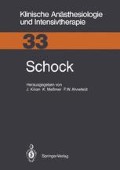Abstract
>In recent years, two assumptions have led to a sustained interest in the role played by plasma fibronectin (Fn) in health and disease. The first is that plasma Fn serves as a critical regulator of reticuloendothelial system (RES) function; the second, that subnormal Fn levels are of clinical significance. The structure and known activities of Fn provide the basis for these concepts (reviewed in, 4, 11). Plasma fibronectin has been shown to bind to products of intravascular coagulation, cell debris, denatured and native collagens, and to some bacteria. Its interactions with macrophages, monocytes, and neutrophils facilitate the clearance of Fn-bound targets by the cells of the RES. The clearance promoting capabilities of Fn are, however, limited to the “target particles” to which Fn can bind, and by physiologic factors that are as yet incompletely understood (11). Animal studies have demonstrated a parallelism between Fn levels, RES function, and ultimate mortality following blunt tissue trauma; however, such associations are not found in states of thrombin induced DIC, experimental endotoxemia, gram-negative bacteremia and burns (reviewed in 11). Fn levels in these experimental settings do not necessarily reflect RES function nor perturbations in the complement, coagulation, fibrinolytic, or kinin generating systems.
Preview
Unable to display preview. Download preview PDF.
References
Annest, S. J., Scovill, W. A., Blumenstock, F. A., Stratton, H. H., Newell, J. C., Paloski, W. H., Saba, T. M., Powers, S. R.: Increased creatinine clearance following cryoprecipitate infusion in trauma and surgical patients with decreased renal function. J. Trauma 20, 726 (1980)
Brodin, B.: Plasma fibronectin in septicaemia. A clinical study. Linkoeping University Medical Dissertations No. 169. Linkoeping, 1983
Brodin, B., Cedergren, B., Lieden, G., Malm, C., Strindberg, J., Vikrot, 0.: Prophylactic administration of cryoprecipi- tate to patients prone to develop fibronectin deficiency and septicemia. Abstracts of the 18th Congress of the International Society of Blood Transfusion. Munich July 22–27, 1984, p. 46, Basel: Karger 1984
Doran, J. E.: A critical assessment of fibronectin1s opsonic role for bacteria and microaggregates. Vox Sang. (Basel) 45, 337 (1983)
Doran, J. E., Callaway, B. D., Reese, A. C., Wynn, J. J., Mansberger Jr., A. R.: A competitive inhibition assay for gelatin binding fibronectin. Vox Sang. (Basel) 65, 243 (1983)
Doran, J. E., Mansberger, A. R., Reese, A. C.: Cold insoluble globulin-enhanced phagocytosis of gelatinized targets by macrophage monolayers: A model system. J. reticuloendothel. Soc. 21, 471 (1980)
Genestal, M., Sie, P., Hugot, B., Cathala, B., Boneu, B., Lareng, L.: Fibronectine plasmatique. Role dans l’infection sevère au reanimation. Presse Medicale 12, 1155 (1983)
Hesselvik, F., Brodin, B., Carlsson, C., Jorfeldt, L., Lieden, G., Cedergren, B.: Cryoprecipitate therapy in hyperdynamic septic shock - a controlled clinical study. Abstracts of the 18th Congress of the International Society of Blood Transfusion. Munich July 22–27, 1984, p. 46. Basel: Karger 1984
Lanser, M. E., Saba, T. M., Scovill, W. A.: Opsonic glycoprotein (plasma fibronectin) levels after burn injury. Relationship to extent of burn and development of sepsis. Ann. Surg. 192., 776 (1980)
Lundsgaard-HANSEN, P., Doran, J. E., Rubli, E., Papp, E., Morgenthaler, J.-J., Spâth, P.: Purified fibronectin ad-ministration to patients with severe abdominal infections. A controlled clinical trial. Ann. Surg. 202, 79 (1985)
Lundsgaard-Hansen, P., Doran, J. E., Rubli, E.: Plasma fibronectin: Relevance for anesthesiology and intensive care. Intensive Care Med. (In press)
Robbins, A. B., Doran, J. E., Reese, A. C., Mansberger Jr., A. R.: Clinical response to cold insoluble globulin replacement in a patient with sepsis and thermal injury. Amer. J. Surg. 142, 636 (1981)
Rosner, B.: Fundamentals of biostatistics, p. 55–60. Boston: Duxbury Press 1982
Rubli, E., Bussard, S., Frei, E., Lundsgaard-Hansen, P., Pappova, E,: Plasma fibronectin and associated variables in surgical intensive care patients. Ann. Surg. 197, 310 (1983)
Saba, T. M., Blumenstock, F. A., Scovill, W. A., Bernhard, H.: Cryoprecipitate reversal of opsonic alpha2 surface binding glycoprotein deficiency in septic surgical and trauma patients. Science 201, 622 (1978)
Scovill, W. A., Saba, T. M., Blumenstock, F. A., Bernard, H., Powers, S. R.: Opsonic alpha2 surface binding glycoprotein therapy during sepsis. Ann. Surg. 188, 521 (1978)
Scovill, W, A., Annest, S. J., Saba, T. M., Blumenstock, F. A., Newell, J, C., Stratton, H. H., Powers, S. R.: Cardiovascular hemodynamics after opsonic alpha-2-surface binding glycoprotein therapy in injured patients. Surgery 86, 284 (T979)
Smith-Erichsen, N., Aasen, A. 0.: Evaluation of severity and prognosis in early stages of septicemia by means of chromogenic peptide substrate assays. Europ. surg. Res. 16, Suppl. 2, T40 (1984)
Smith-Erichsen, N., Aasen, A. O., Gallimore, M. J., Amundsen, E.: Studies of components of the coagulation system in normal individuals and septic shock patients. Circulat Shock 9, 491 (1982)
Snyder, E. L., Barash, P. G., Mosher, D. F., Walter, S. D Plasma fibronectin level and clinical status in cardiac surgery patients. J. Lab. clin. Med. 102, 881 (1983)
Editor information
Editors and Affiliations
Rights and permissions
Copyright information
© 1987 Springer-Verlag Berlin Heidelberg
About this chapter
Cite this chapter
Doran, J.E., Lundsgaard-Hansen, P. (1987). Plasma fibronectin in abdominal sepsis and shock: Therapeutic and prognostic value. In: Kilian, J., Meßmer, K., Ahnefeld, F.W. (eds) Schock. Klinische Anästhesiologie und Intensivtherapie, vol 33. Springer, Berlin, Heidelberg. https://doi.org/10.1007/978-3-642-72533-3_19
Download citation
DOI: https://doi.org/10.1007/978-3-642-72533-3_19
Publisher Name: Springer, Berlin, Heidelberg
Print ISBN: 978-3-540-17590-2
Online ISBN: 978-3-642-72533-3
eBook Packages: Springer Book Archive

